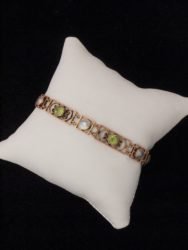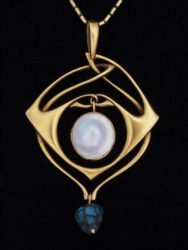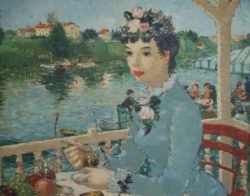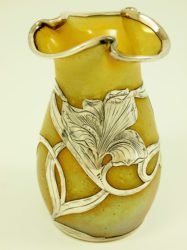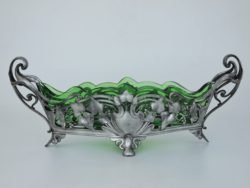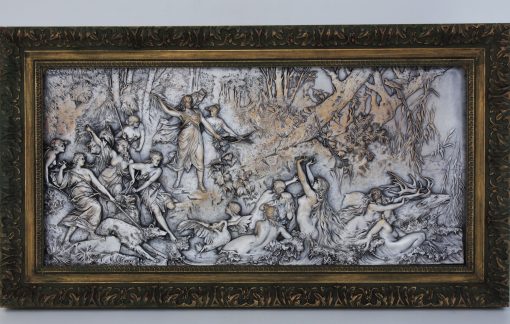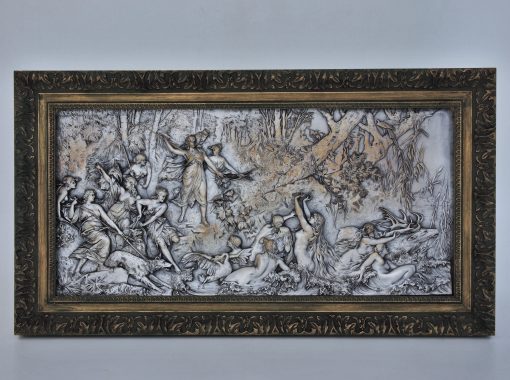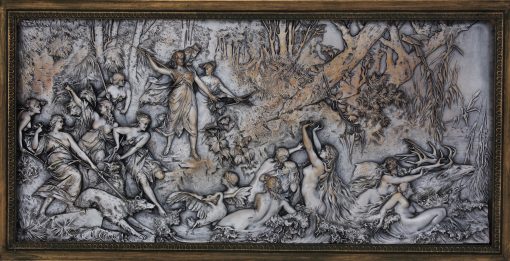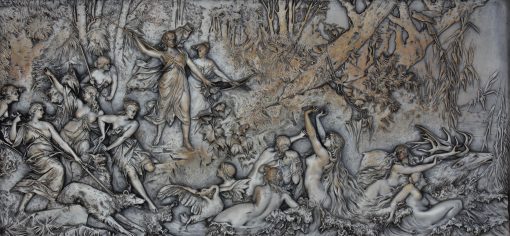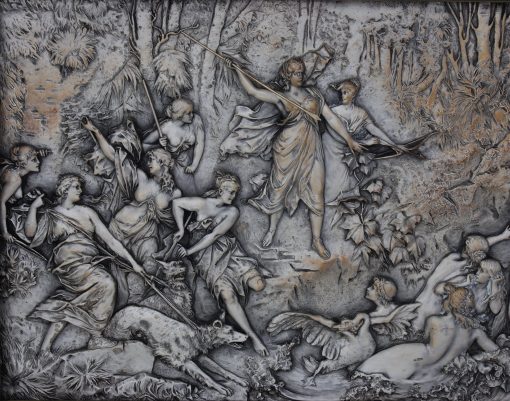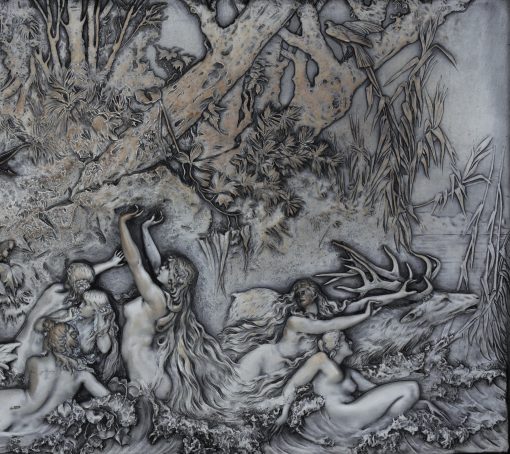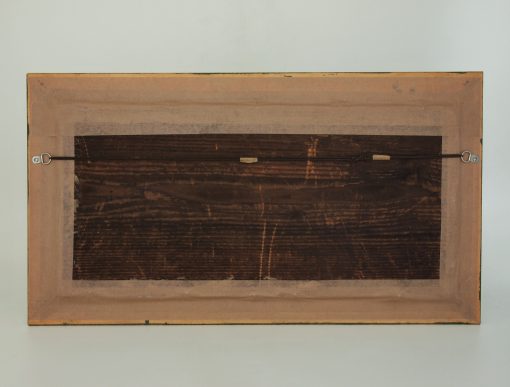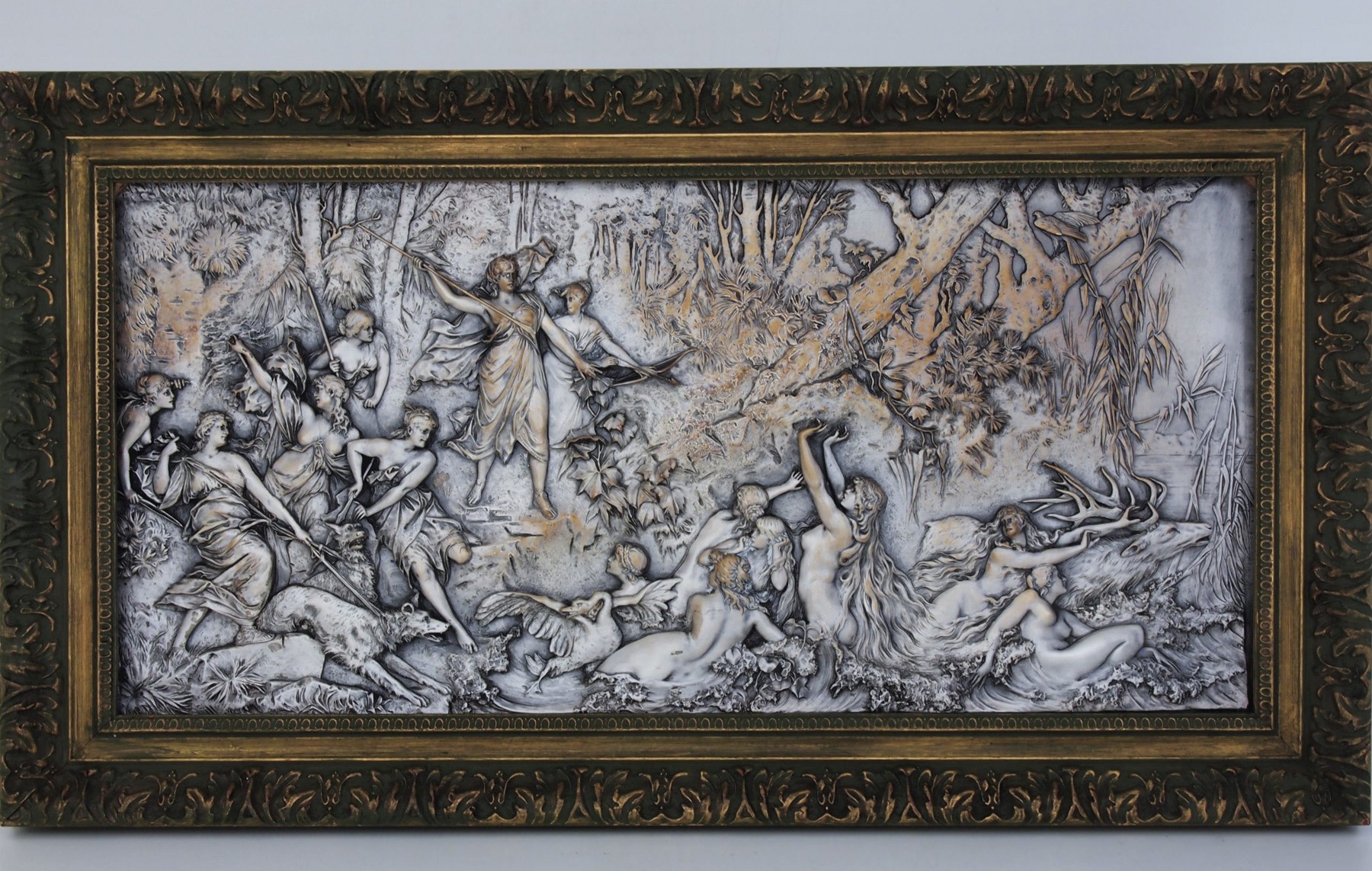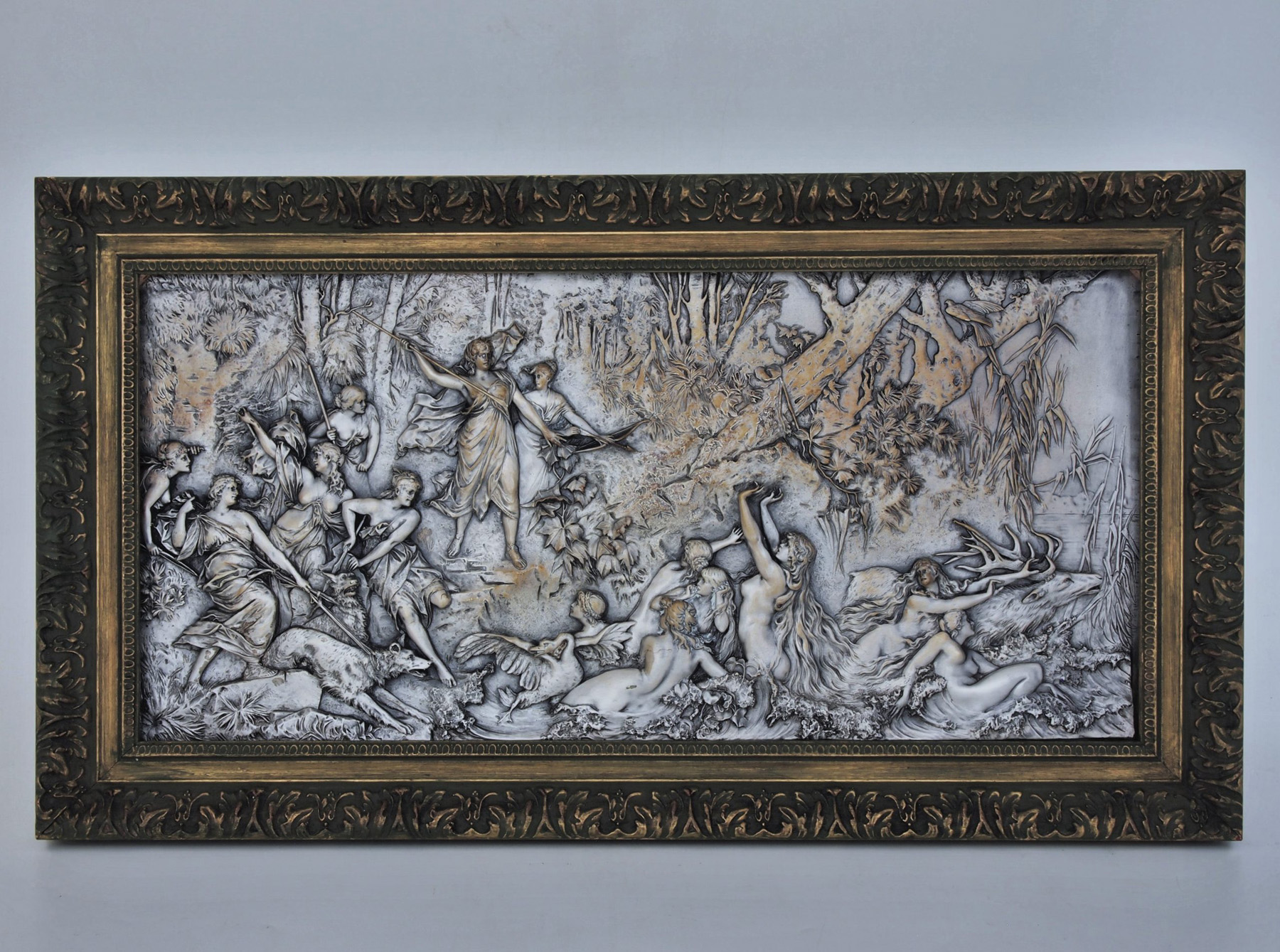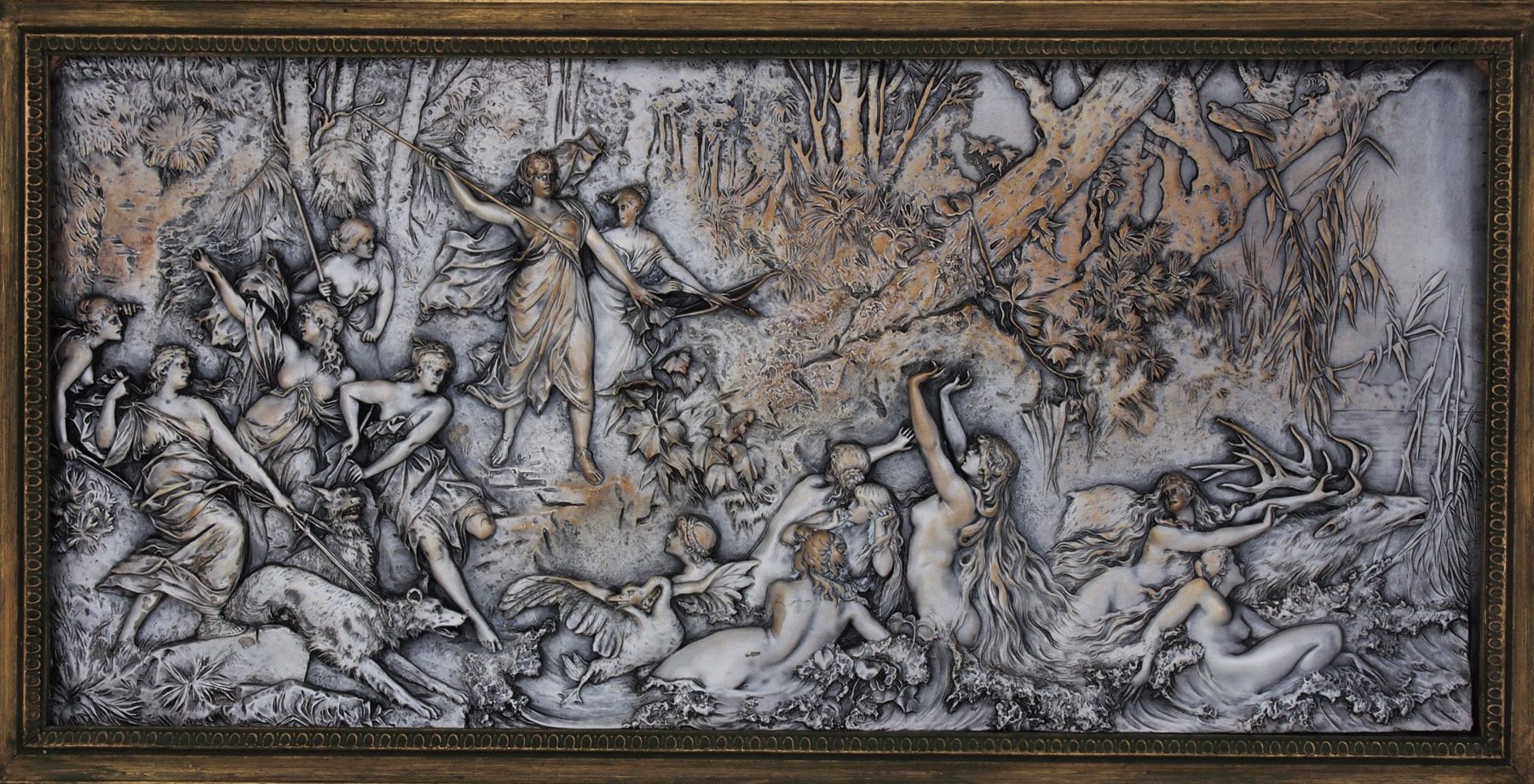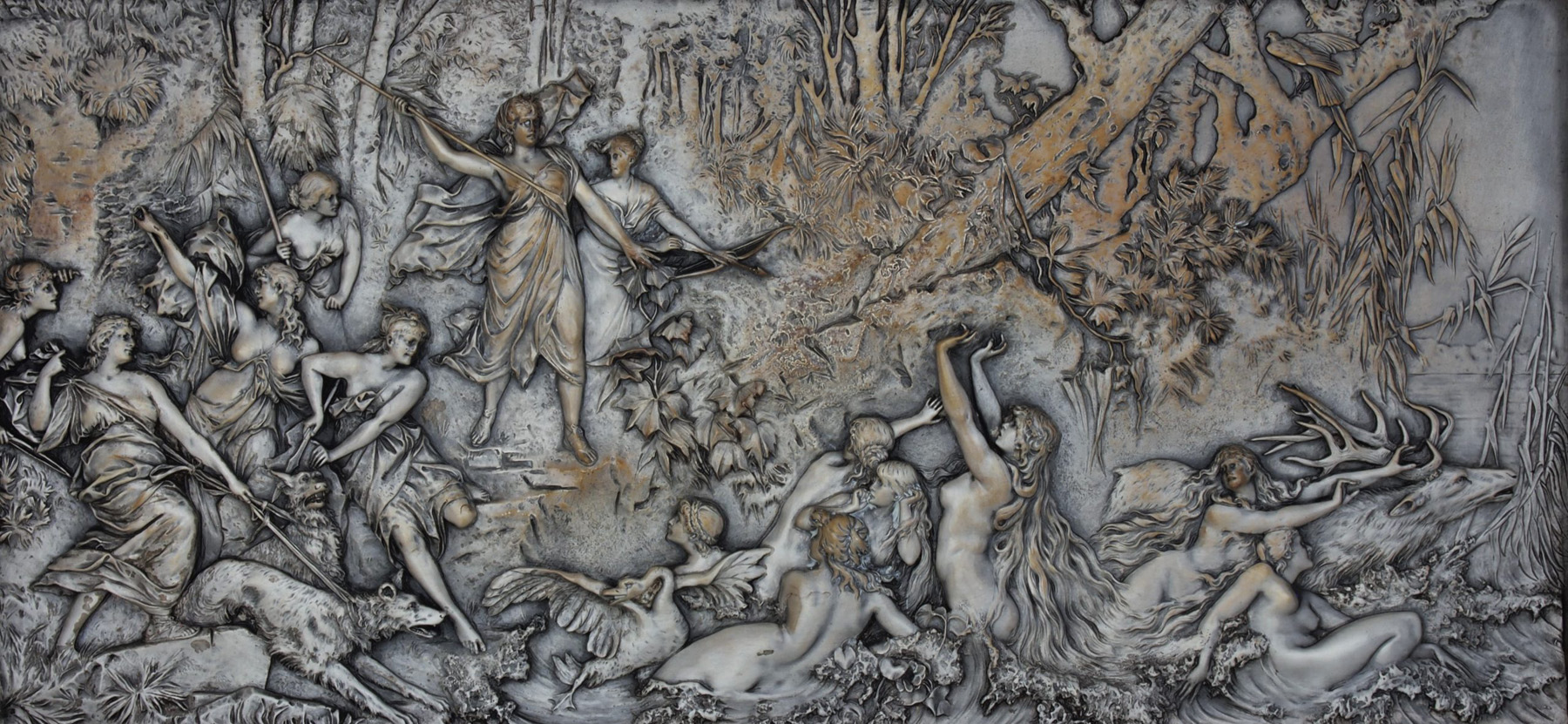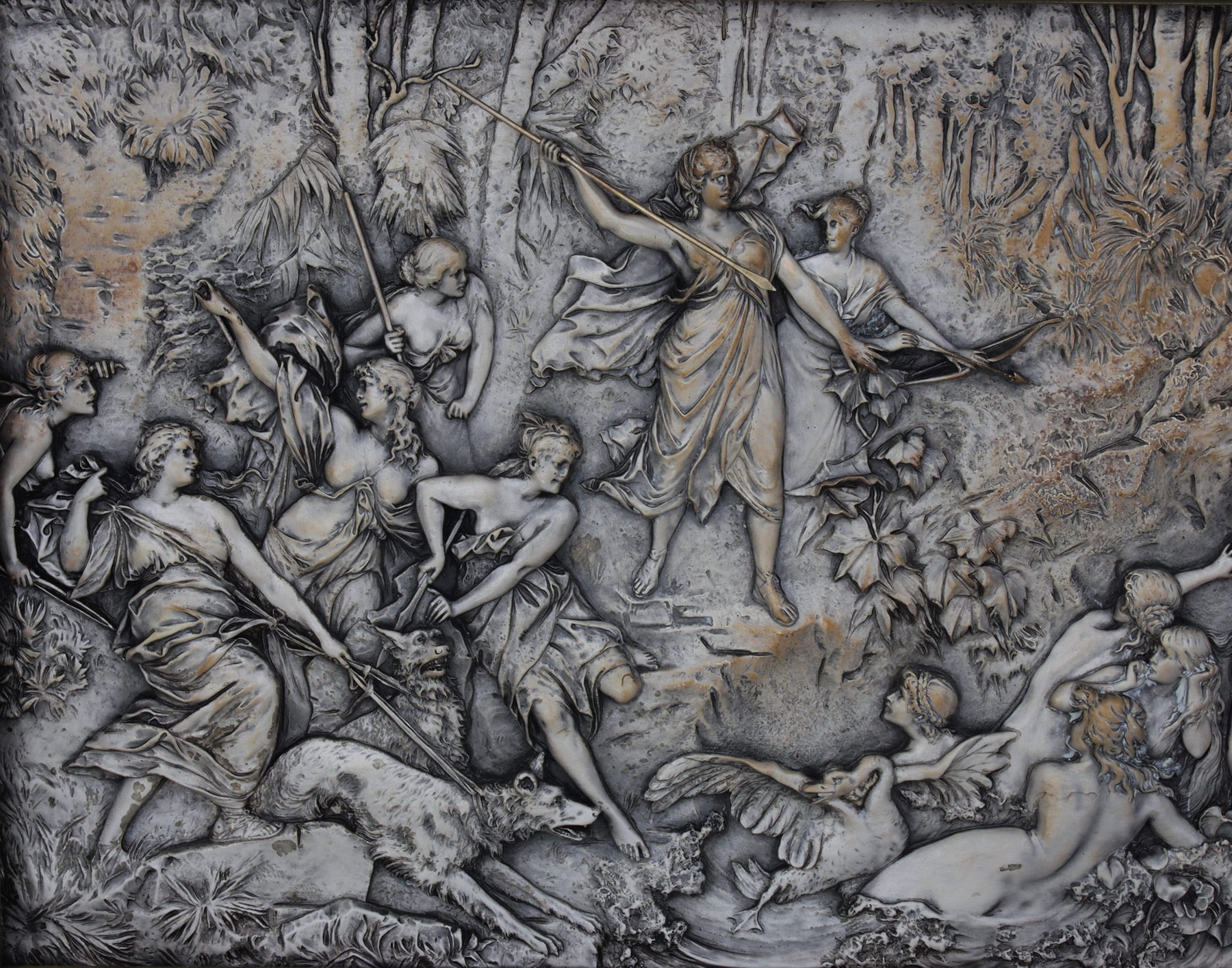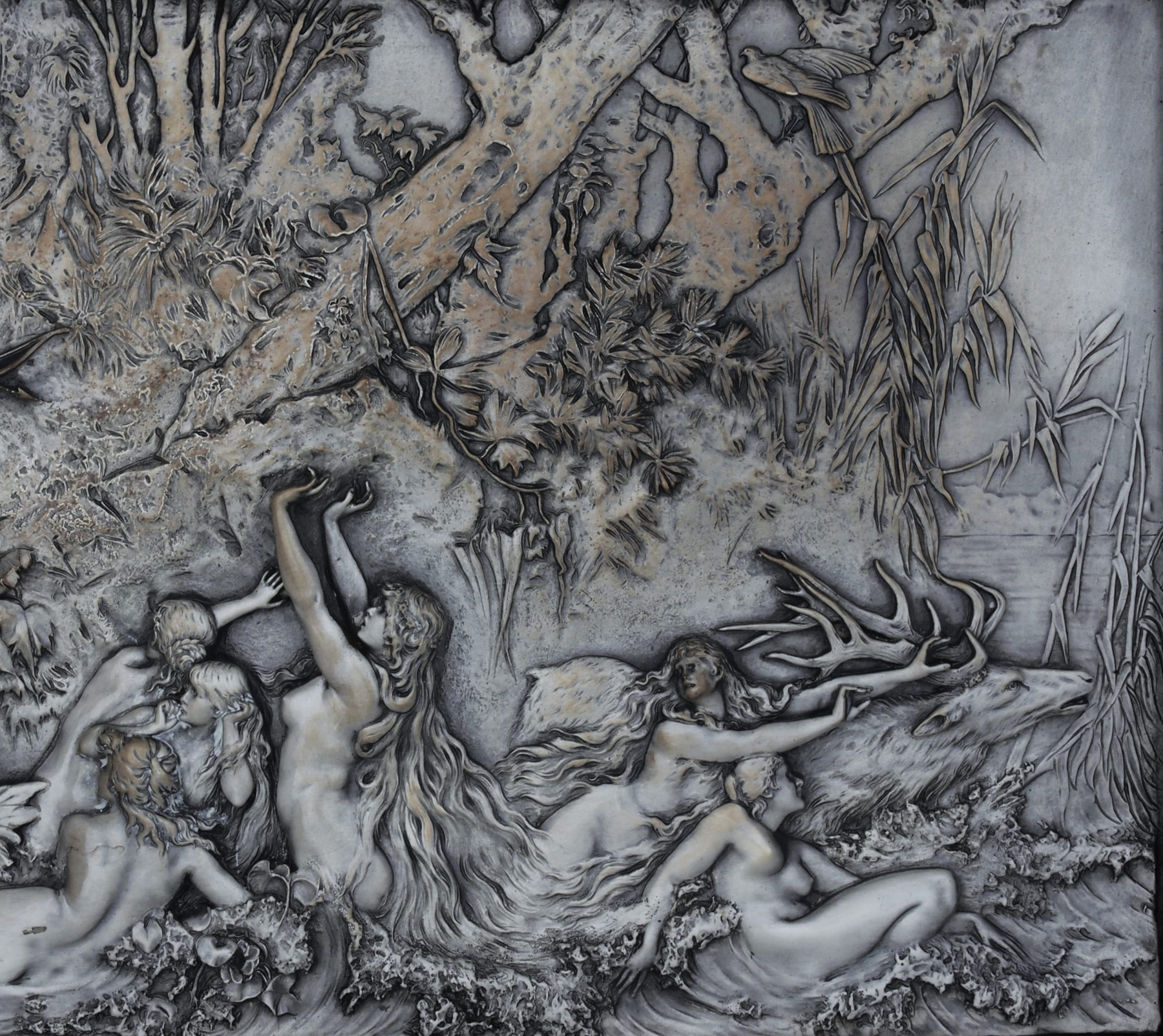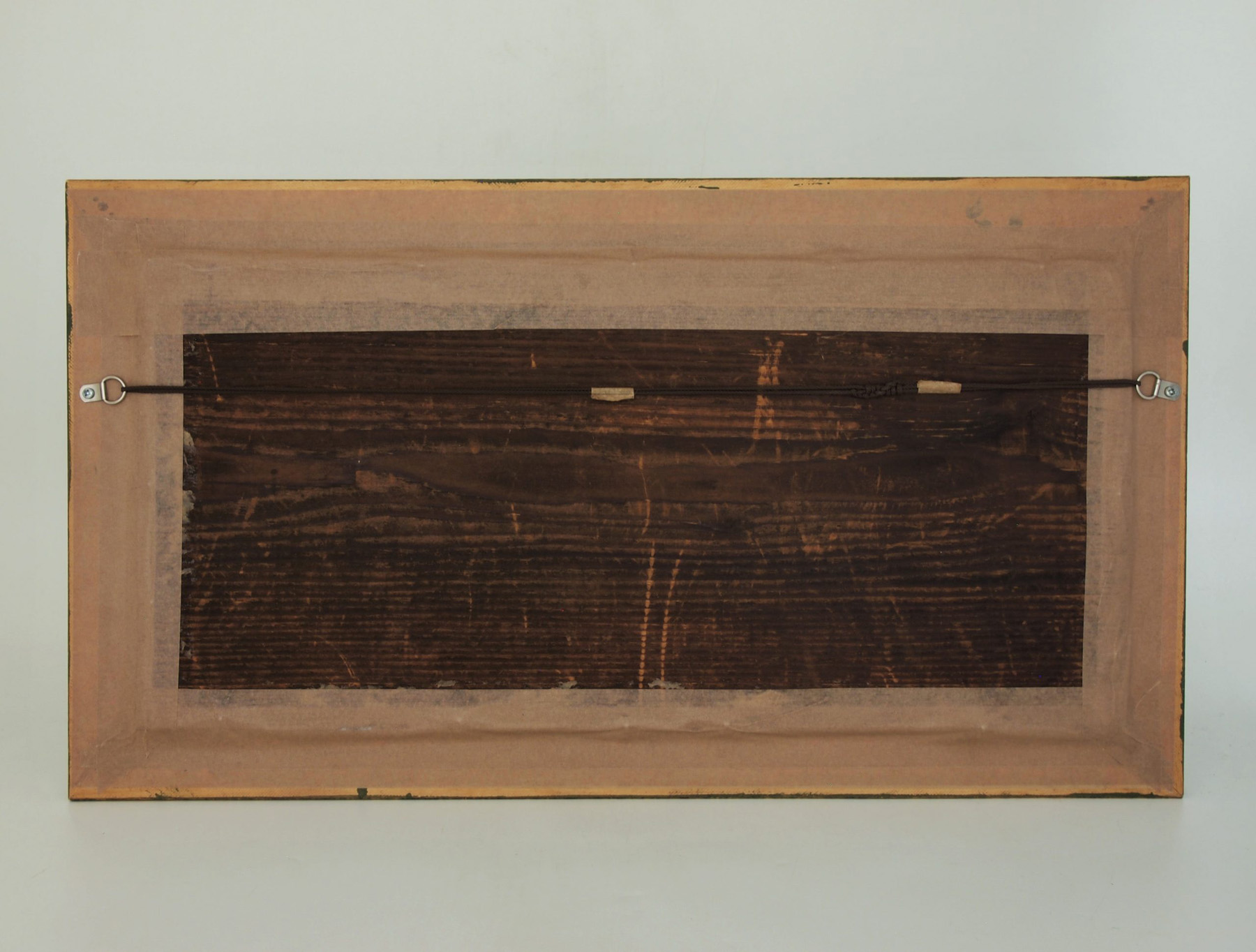Murrle Bennett Gold, Peridot and Mother-of-Pearl Bracelet*
Bracelet from Murrle Bennett crafted in 9 ct. gold, so very typical of the style of jewellery supplied by them to Liberty’s during the early 1900’s. Openwork in design with alternate rectangular and square sections,…
Archibald Knox Gold Pendant for Liberty
Gold pendant with an openwork entrelac design from the drawing board of Archibald Knox and dating from circa 1905. Set with a central blister pearl drop and with a turquoise matrix lower drop, this pendant…
‘Lady on The Seine’ by Dietz Edzard*
Ornately framed oil on canvas by the German born artist Dietz Edzard (1893-1963). This is an atmospheric half length portrait of an elegantly dressed young woman taking refreshment whilst seated on a verandah raised above…
Loetz ‘Candia’ Vase with Silver Overlay
Little cabinet vase from Loetz in opaque ‘Candia’ glass with a trefoil rim, further decorated with an applied Art Nouveau ‘Silberiris’ design in pure silver. Loetz collaborated with a company in the US known as…
WMF Flower Dish
Pewter flower dish from WMF with the original green cut glass removable liner. So Art Nouveau, with its flowing outline, featuring an openwork whiplash design framing leaves and berries of ivy. Originally electro-plated but most…
Contact Details
Tel: +44 (0)7802 872363
0345 6071772
Email: info@nouveaudecoarts.com
Diana and Actaeon*
Item Description
Framed electrogravure image of Diana and Actaeon after the original oil painting by Emilie Chaese (French, 19th Century).
The mythical story revolves around the unfotunate young hunter Actaeon who accidentally stumbles across Diana, goddess of the hunt, whilst she is bathing in a spring, assisted by her escort of nymphs. The embarassed Diana splashes water over the mortal Actaeon who is instantly transformed into a long antlered stag. He flees the scene but is eventually killed by his own hounds who no longer recognize him.
Here we see Actaeon, just after his transformation, making his escape through the water while Diana, surrounded by her young nymphs, raises her spear ready to throw.
Electrogravures were introduced by Elkington & Co as a result of their printing works. A master tablet was carved in relief and the metal laid down on the surface via an electric current passing through an acid bath.
This enabled superb detail to be produced, as can be seen on this example. The figures of the young women, the animals, trees and water, all stand out strongly in high relief.
Circa 1870-80 and measuring approximately 36 cm high by 66 cm wide overall, with the visible image being 25.5 X 55 cm.
